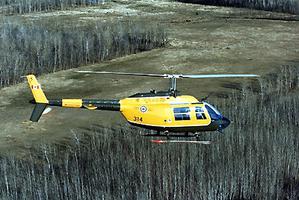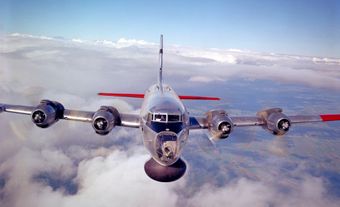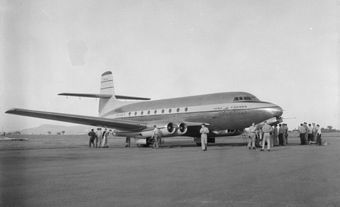Helicopter
Helicopter, an aircraft that derives its lift and propulsive force from horizontally rotating rotors or blades and is capable of ascending and descending vertically. The torque generated by the blades is balanced either by a vertical tail rotor or by having 2 sets of blades rotating in opposite directions. The helicopter originated as a toy centuries ago, a feathered top which rose in the air when spun between the hand or by means of a string. In the 19th century a few powered helicopter models were made, and the advent of the internal-combustion engine brought a spate of unsuccessful helicopter prototypes in many countries; but the first man to get airborne and descend safely was Paul Cornu of France on 13 November 1907.Control was the problem, and the men who showed the way to the practical helicopter were Juan de la Cierva of Spain, with his autogyros, Heinrich Rocke of Germany and Igor Ivanovich Sikorsky of Russia and the US. The persistence and ingenuity of the many contributors has produced a truly versatile machine suited to war and peace and capable of performing tasks beyond the capability of other vehicles.
In Canada, the Froebe brothers of Homewood, Man, designed and built a helicopter which flew in 1938. Mechanical problems were encountered and the project was abandoned, but the helicopter survived and is now in the Western Canada Aviation Museum in Winnipeg. The SG-IV-C helicopter was designed and built in Montréal by Bernard Sznycer and Selma Gottlieb, and flew on 9 July 1947. After successful completion of the initiated test program, the SG-N-D Grey Gull, the first production machine, was produced, flown on 6 February 1948, and granted a Certificate of Airworthiness on 15 March 1951. However, financial backing was withdrawn in 1954. There have been no more Canadian designs, and all helicopters used in Canada are of foreign origin.
Military use of helicopters started in the RCAF in 1947, with the RCN and army following later. Air-force operations have been mainly concerned with search, rescue and mercy missions, and with heavy lift capability; the navy has been concerned with antisubmarine operations and has developed aids to permit operation from small ships in rough weather, notably the haul-down recovery system; and the army with battlefield operations. The RCAF was heavily involved in the construction of the Mid-Canada Line, and Squadron Leader R.T. Heaslip was awarded the MCKEE TROPHY in 1956 for his contribution to the success of these operations.
Helicopters have been used for forestry protection, crop dusting, surveying, exploration, commuter services, search and rescue, and in the support of other industries such as building and offshore oil. The brilliant pioneer Carl AGAR imported several Bell 47 helicopters in 1947 for spraying the rugged terrain of the Okanagan Valley, and later for oil exploration. Agar's company became one of the world's major helicopter companies. In 1985 nearly 750 helicopters were used commercially in Canada.

 Share on Facebook
Share on Facebook Share on X
Share on X Share by Email
Share by Email Share on Google Classroom
Share on Google Classroom





